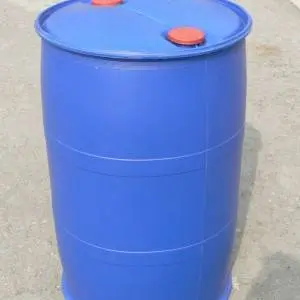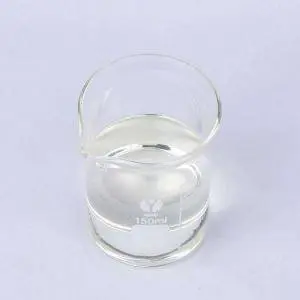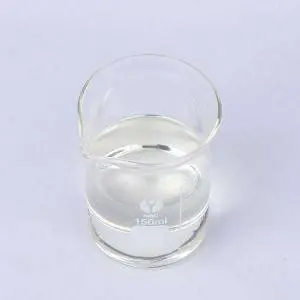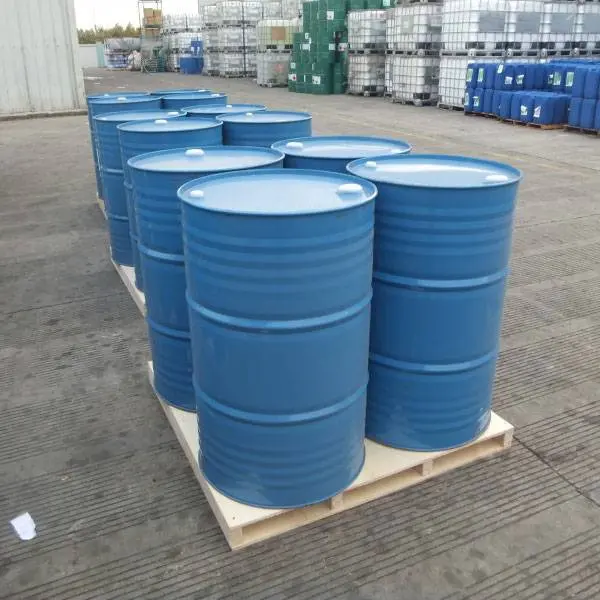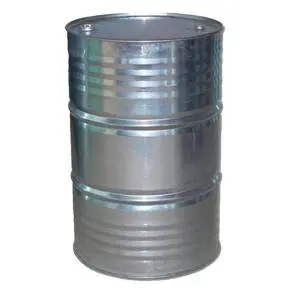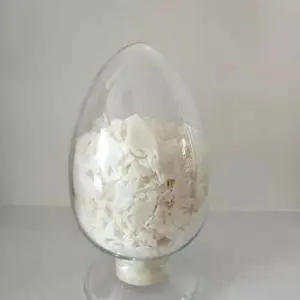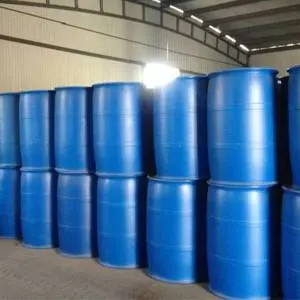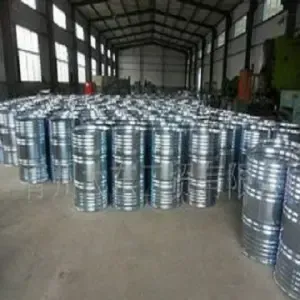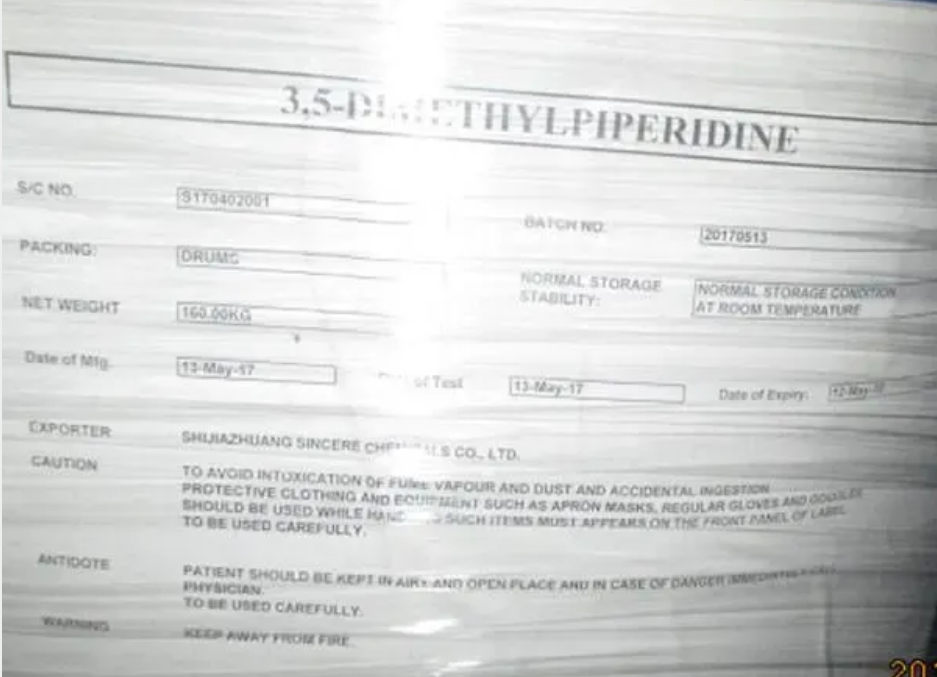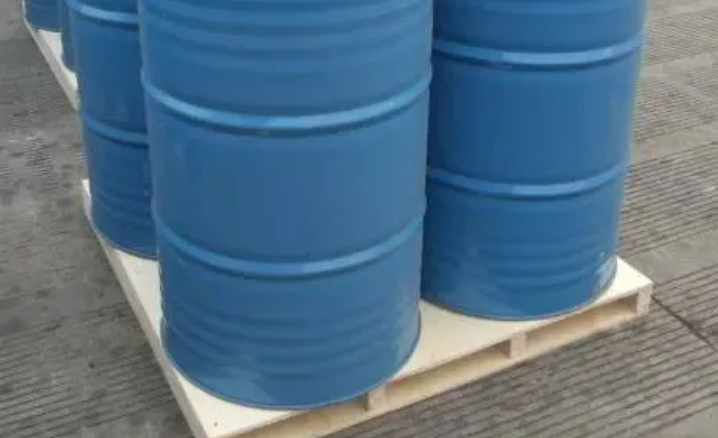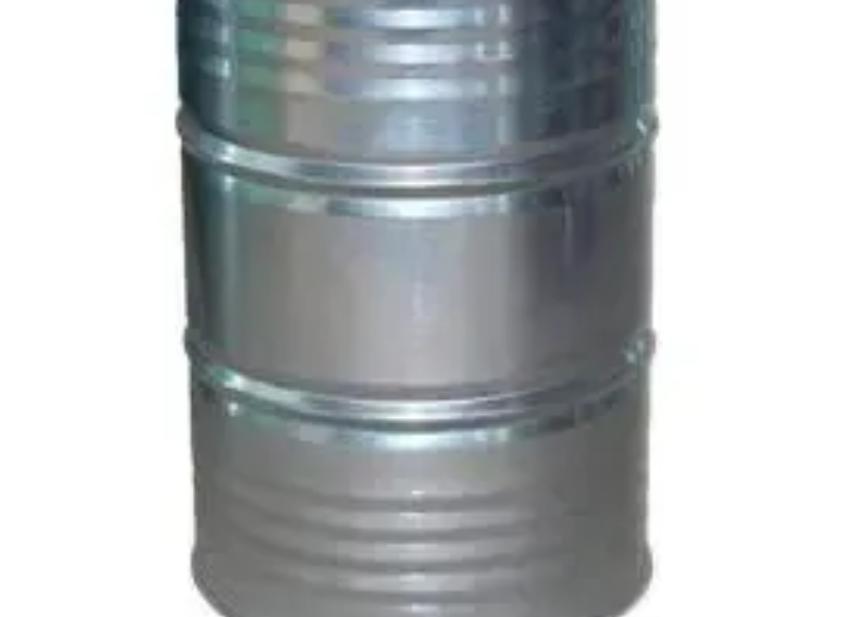Tetramethylethylenediamine (TMEDA): Efficient Ligand & Catalyst
Understanding Tetramethylethylenediamine: A Critical Industrial Compound and its Market Dynamics
Tetramethylethylenediamine (TMEDA), also systematically known as N,N,N',N'-tetramethylethylenediamine, stands as a pivotal organic compound widely recognized for its diverse applications across various industrial sectors. This colorless liquid with a characteristic amine odor serves primarily as a ligand in organometallic chemistry, a catalyst in anionic polymerization, and a strong non-nucleophilic base. The global market for high-purity TMEDA is experiencing robust growth, driven by escalating demands in the polymer industry for synthesizing advanced materials like polyurethanes and polyacrylates, where TMEDA acts as an accelerator for polymerization reactions. Furthermore, its crucial role in pharmaceuticals and fine chemical synthesis as a chelating agent for lithium and other alkali metal reagents underscores its indispensable nature. Industry trends indicate a persistent demand for higher purity grades and more sustainable production methods, pushing manufacturers to innovate in synthesis and purification technologies. As industries worldwide strive for enhanced efficiency, lower energy consumption, and superior product performance, the unique chemical properties of TMEDA position it as a foundational component in numerous cutting-edge processes, ensuring its continued relevance and strategic importance in modern chemical manufacturing.
Technical Specifications and Performance Parameters of Tetramethylethylenediamine
The performance and reliability of Tetramethylethylenediamine (TMEDA) in industrial applications are directly linked to its precise technical specifications. As a highly versatile chemical, its physical and chemical properties dictate its suitability for specific roles, from catalyst to solvent. Below is a detailed table outlining the typical parameters for high-grade Tetramethylethylenediamine, crucial for ensuring optimal performance in sensitive applications such as polymerization, pharmaceutical synthesis, and analytical chemistry. These values reflect the quality expected from a reputable manufacturer, adhering to stringent internal and international standards. Understanding these parameters is vital for process engineers and R&D chemists to predict reaction kinetics, product yield, and overall process efficiency. For instance, high purity ensures minimal side reactions and maximum catalytic activity, while precise boiling and melting points are critical for handling, storage, and processing conditions.
| Parameter | Typical Value | Significance in Applications |
|---|---|---|
| CAS Number | 110-18-9 | Unique identifier for regulatory compliance and chemical sourcing. |
| Molecular Formula | C6H16N2 | Defines elemental composition, crucial for stoichiometry in reactions. |
| Molecular Weight | 116.21 g/mol | Essential for mass-based calculations and reaction yields. |
| Appearance | Colorless liquid | Visual indicator of purity and absence of contaminants. |
| Purity (GC) | ≥ 99.0% | Critical for catalytic activity, minimizing side reactions, and ensuring product quality. |
| Boiling Point | 120-122 °C (at 760 mmHg) | Determines distillation conditions and safe operating temperatures. |
| Melting Point | -55 °C | Indicates suitability for low-temperature applications and storage stability. |
| Density (25 °C) | ~0.77 g/mL | Important for volumetric measurements and material handling. |
| Flash Point (Closed Cup) | 16 °C | Key safety parameter for storage, transportation, and handling due to flammability. |
| Solubility | Miscible with water, ethanol, ether, benzene | Indicates versatility as a solvent or co-solvent in various reaction media. |
Maintaining these stringent parameters is fundamental for any high-quality Tetramethylethylenediamine product. Deviations can lead to compromised reaction efficiencies, increased byproduct formation, and potential safety hazards. The meticulous quality control processes, including Gas Chromatography (GC) for purity, ensure that each batch meets these specifications, providing manufacturers with a reliable and consistent chemical reagent. This level of precision is paramount in industries where even minor impurities can have significant ramifications on the final product's performance or purity, such as in the synthesis of active pharmaceutical ingredients or high-performance polymers.
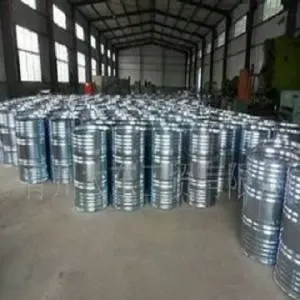
Advanced Manufacturing Processes and Stringent Quality Control for Tetramethylethylenediamine
The production of high-purity Tetramethylethylenediamine (TMEDA) is a sophisticated chemical synthesis process, far removed from mechanical manufacturing like casting or CNC machining. It typically involves a multi-step organic synthesis followed by rigorous purification techniques to achieve the desired purity levels essential for its demanding industrial applications. One common synthetic route begins with the alkylation of ethylenediamine (EDA) using formaldehyde and formic acid (Eschweiler–Clarke reaction) or through reductive amination with formaldehyde. The critical aspects of the manufacturing process revolve around precise control of reaction conditions such as temperature, pressure, catalyst concentration, and reaction time, which directly influence yield and selectivity. Post-reaction, the crude product undergoes extensive purification steps, most commonly fractional distillation, to separate TMEDA from unreacted raw materials, byproducts, and impurities. The selection of high-grade raw materials is paramount, as their quality directly impacts the purity of the final product and minimizes the formation of undesirable side products.
Quality control and adherence to international standards are integral to ensuring the reliability and consistent performance of Tetramethylethylenediamine. Manufacturers typically implement comprehensive Quality Management Systems compliant with ISO 9001, covering every stage from raw material procurement to final product packaging. Analytical testing includes Gas Chromatography (GC) for quantitative purity assessment, Karl Fischer titration for moisture content, and spectroscopic methods (e.g., NMR, IR) to confirm structural integrity and detect trace impurities. These stringent detection standards ensure that the product meets the specified purity (typically >99.0%). The stability of TMEDA, particularly when stored under inert atmosphere in sealed container111s, contributes to a long shelf-life, thereby enhancing its applicability across diverse industries such as petrochemicals for specialized additive formulations, metallurgy for certain surface treatments, and water treatment where it might act as a component in flocculants or corrosion inhibitors (though this is a less common direct use for TMEDA itself). Its stability and low reactivity with common industrial materials also mean it generally doesn't contribute to equipment corrosion, allowing for a longer lifespan of processing equipment. In typical applications, the compound itself is stable, contributing to the longevity of the chemical system it's part of, rather than having a "lifespan" in the traditional sense of a mechanical part.
Versatile Applications and Unrivaled Technical Advantages of Tetramethylethylenediamine
The broad utility of Tetramethylethylenediamine (TMEDA) is attributed to its unique chemical structure, featuring two tertiary amine groups that enable it to act as a strong base, a powerful chelating agent, and an effective ligand. In organic synthesis, TMEDA is indispensable as a non-nucleophilic base, often used to deprotonate weak acids or to activate organometallic reagents, particularly lithium alkyls, by breaking up their aggregates. This activation leads to enhanced reactivity and selectivity in various C-C bond forming reactions, crucial for the synthesis of complex molecules in pharmaceuticals, agrochemicals, and specialty chemicals. Its ability to chelate lithium ions, forming soluble complexes, dramatically improves the efficacy of these reagents, enabling reactions that would otherwise be sluggish or impossible. Furthermore, in the realm of polymerization, TMEDA serves as a co-initiator or accelerator in anionic polymerization, especially for styrenes and dienes, facilitating rapid and controlled polymer growth, leading to polymers with precise molecular weights and narrow polydispersity indices. This precision is critical for high-performance elastomers and plastics.
Beyond its catalytic and activating roles, the technical advantages of using Tetramethylethylenediamine extend to energy efficiency and process optimization. By accelerating reaction rates, TMEDA can enable lower reaction temperatures or shorter reaction times, significantly reducing energy consumption in industrial processes. This contributes to a more sustainable manufacturing footprint and lower operational costs. For instance, in certain polyurethane foam formulations, TMEDA acts as a gelling catalyst, promoting efficient cross-linking at ambient temperatures, thereby minimizing the need for external heating and enhancing production throughput. While TMEDA itself is not typically used for direct corrosion resistance of materials, its role in creating stable and robust chemical systems or in the synthesis of materials with enhanced durability can indirectly contribute to longevity and performance. In the context of industrial chemical handling, its known compatibility with common materials like stainless steel, glass, and certain plastics ensures that it does not cause undue corrosion to process equipment, thereby enhancing equipment lifespan and reducing maintenance needs. Its inherent stability under proper storage conditions ensures consistent reactivity over time, further enhancing its appeal for demanding industrial processes requiring reliability and reproducibility.
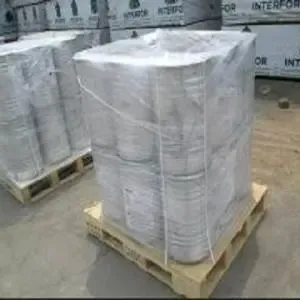
Selecting the Right Partner: Expertise in Tetramethylethylenediamine Production and Custom Solutions
Choosing a reliable supplier for Tetramethylethylenediamine is paramount for industries where purity, consistency, and timely delivery are critical. A top-tier manufacturer distinguishes itself through not only product quality but also deep technical expertise, robust R&D capabilities, and a commitment to customer-centric solutions. Key indicators of an authoritative supplier include comprehensive certifications such as ISO 9001 for quality management, ISO 14001 for environmental management, and potentially even certifications relevant to specific end-use industries like GMP for pharmaceutical-grade materials. Longevity in the market and a proven track record of serving diverse industries, coupled with transparent supply chain practices, further build trust. Reputable manufacturers invest heavily in advanced analytical instrumentation and skilled personnel to ensure every batch of TMEDA meets stringent specifications, often exceeding baseline industry requirements. This dedication to quality is reflected in their ability to provide detailed Certificates of Analysis (CoA) for each shipment, offering complete traceability and assurance of product integrity.
Beyond standard product offerings, leading providers of Tetramethylethylenediamine often specialize in offering customized solutions tailored to specific client requirements. This might include varying purity levels (e.g., reagent grade vs. industrial grade), specific packaging sizes from laboratory quantities to bulk industrial drums or ISO tanks, and even custom blending or formulation services. For clients engaged in niche applications or proprietary processes, the ability to collaborate with a manufacturer on bespoke purity profiles or modified physical forms of TMEDA can be a significant competitive advantage. This collaborative approach, backed by strong technical support teams, allows for optimization of client processes, reduction of waste, and acceleration of new product development cycles. Engaging with a supplier that demonstrates a profound understanding of industry trends and application challenges ensures access to not just a chemical product, but a partnership that facilitates innovation and operational excellence, ensuring that the supplied Tetramethylethylenediamine seamlessly integrates into complex industrial workflows.
Illustrative Application Case Studies of Tetramethylethylenediamine
The practical impact of high-quality Tetramethylethylenediamine is best demonstrated through its successful implementation in real-world industrial and research scenarios. For instance, a leading pharmaceutical company faced challenges in scaling up the synthesis of a novel API precursor, specifically requiring a highly selective deprotonation step. Traditional bases led to low yields and significant byproduct formation. By incorporating high-purity TMEDA as a chelating agent with n-butyllithium, the company observed a dramatic improvement in reaction kinetics and selectivity, leading to a 30% increase in yield and a significant reduction in purification steps. This not only streamlined their production process but also reduced energy consumption and waste, demonstrating TMEDA's critical role in enhancing synthetic efficiency. Another compelling case involves a specialized polymer manufacturer producing highly uniform block copolymers for advanced adhesive applications. They struggled with controlling the living polymerization process, resulting in broad molecular weight distributions.
Through the precise use of Tetramethylethylenediamine as an additive in their anionic polymerization, the manufacturer achieved unprecedented control over chain growth. This resulted in polymers with exceptionally narrow polydispersity indices (PDI Tetramethylethylenediamine’s versatility and its capacity to drive innovation and efficiency across a spectrum of demanding applications, from drug discovery to advanced material science, by providing predictable and superior chemical performance.
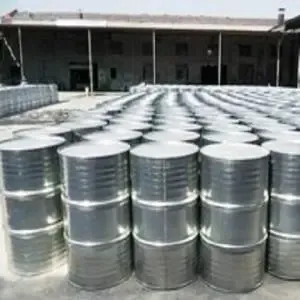
Ensuring Trust: FAQs, Delivery, and Customer Support for Tetramethylethylenediamine
Frequently Asked Questions (FAQs) about Tetramethylethylenediamine
Understanding the practical aspects of sourcing and utilizing Tetramethylethylenediamine is crucial for smooth operations. Common inquiries often revolve around storage, handling, purity assurance, and application-specific advice. For instance, users frequently ask about the recommended storage conditions for TMEDA, given its flammability and hygroscopic nature. It is advised to store TMEDA in a cool, dry, well-ventilated area, away from ignition sources, in tightly sealed container111s, preferably under an inert atmosphere like nitrogen to prevent moisture absorption and degradation. Another common question pertains to the types of materials compatible with TMEDA for transfer and storage; stainless steel, glass, and certain high-density polyethylene (HDPE) plastics are generally suitable, while copper and its alloys should be avoided. Purity testing methodologies are also a frequent topic, with Gas Chromatography (GC) being the gold standard for quantitative analysis of TMEDA content and impurity profiling. Our technical team is readily available to address specific queries regarding safe handling protocols, emergency response, and detailed chemical compatibility guidance, ensuring that clients can use Tetramethylethylenediamine safely and effectively within their operations.
Reliable Delivery and Comprehensive Warranty Policies
Timely and secure delivery is a cornerstone of our commitment to customer satisfaction. We leverage an extensive logistics network to ensure that Tetramethylethylenediamine reaches our clients efficiently, whether it's local delivery or international shipment. Our standard delivery cycles typically range from 2-5 business days for domestic orders, with international shipments varying based on destination and customs procedures. We provide clear communication on estimated delivery times and tracking information to keep clients informed throughout the process. Packaging is rigorously designed to comply with international dangerous goods regulations (e.g., UN, ADR, IMDG, IATA), ensuring safe transit of this flammable liquid. Furthermore, we stand behind the quality of our Tetramethylethylenediamine with a robust quality assurance and warranty commitment. Our products are guaranteed to meet or exceed the specifications outlined in the Certificate of Analysis (CoA) for a defined period, typically 12-24 months from the date of manufacture, provided proper storage and handling conditions are observed. In the rare event of a quality discrepancy, our dedicated quality assurance team promptly investigates and resolves issues, upholding our reputation for reliability.
Dedicated Customer Support and Technical Assistance
Exceptional customer support is integral to our service philosophy, ensuring that clients receive comprehensive assistance at every stage of their engagement. Our support channels are multifaceted, providing seamless access to expertise. Sales inquiries are handled by experienced account managers who can provide quotes, manage orders, and offer insights into product availability and lead times. For technical challenges or application-specific advice, our team of seasoned chemists and technical specialists is available for consultation, offering in-depth guidance on product usage, process optimization, and troubleshooting. Post-purchase support includes assistance with product documentation, safety data sheets (SDS), and any logistical or quality-related concerns that may arise. We believe in building long-term partnerships with our clients, fostering an environment where open communication and collaborative problem-solving lead to mutual success. Our commitment to responsive and knowledgeable customer support underscores our dedication to not just supplying Tetramethylethylenediamine, but also providing a complete solution that empowers our clients' operational and research endeavors.
Authoritative References
- March, J. (2007). March's Advanced Organic Chemistry: Reactions, Mechanisms, and Structure. 6th ed. Wiley-Interscience.
- Clayden, J., Greeves, N., & Warren, S. (2012). Organic Chemistry. 2nd ed. Oxford University Press.
- Olah, G. A., & Prakash, G. K. S. (2017). Ionic Liquids as Green Solvents: Progress and Prospects. John Wiley & Sons.
- Odian, G. (2004). Principles of Polymerization. 4th ed. John Wiley & Sons.
- Carey, F. A., & Sundberg, R. J. (2007). Advanced Organic Chemistry Part A: Structure and Mechanisms. 5th ed. Springer.
Post time: آگوست . 17, 2025 05:40



